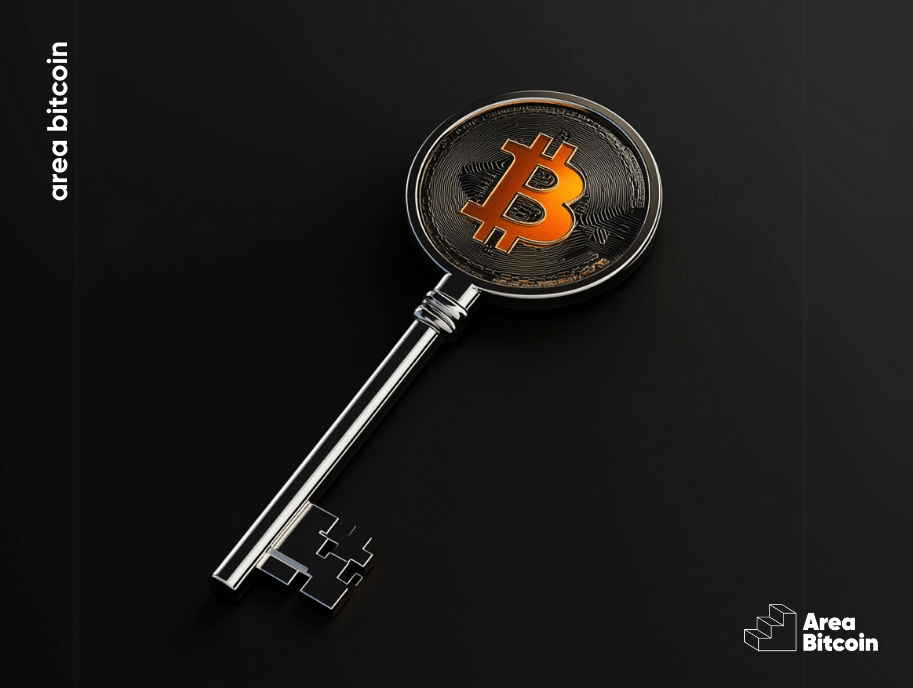Bitcoin is software, and like all software, it undergoes updates to enhance the network. In Bitcoin, these improvements are proposed through BIPs to better meet user needs.
Since its creation in 2008, Bitcoin has undergone successive updates to address new user demands and technological advancements.
Over time, new functionalities can be integrated into Bitcoin, enhancing its capability and utility.
The primary motivation behind updates to the Bitcoin network is the constant pursuit of improvements, focusing especially on crucial aspects such as security, scalability, and privacy.
These improvements are effectuated through Bitcoin Improvement Proposals, known as BIPs.
In this article, we will understand more about Bitcoin BIPs, evaluating their impact and importance for the continuous evolution of this currency.
Let’s dive in!
Table of Contents
What is a BIP in Bitcoin?
A BIP is a formal proposal for improving Bitcoin. It is a document that suggests changes and is discussed by the Bitcoin community. If accepted, the improvement is implemented through a Bitcoin update.
Since Bitcoin is a decentralized network, anyone can propose a Bitcoin Improvement Proposal. This is entirely different from centralized networks or systems, where updates occur at the discretion of the network’s creator or a council.

In the case of Bitcoin, being a decentralized and open-source system (the code is available on GitHub), anyone can suggest an improvement.
Therefore, a Bitcoin Improvement Proposal is a formal process for suggesting improvements and follows a specific protocol that requires voting and consensus to be approved, as detailed below:
- The proposal must be suggested in the Bitcoin Core developer community.
- After this, various discussions about the proposal occur, and other members may show interest in it.
- Finally, the proposal receives a number and is added to a repository on GitHub, where it is public for everyone to view.
At this point, the entire community discusses the proposal’s validity, and it can be voted on. If consensus is reached, it is implemented.
When the proposal is on GitHub, it is considered official, but that does not mean it is active in the protocol.

How is a Bitcoin Improvement Proposal approved?
When a BIP is published, a discussion begins among the Bitcoin developer community and the broader community, including miners, nodes, and users. This way, everyone has the opportunity to participate in analyzing the proposal’s validity and importance.
If the Bitcoin Improvement Proposal involves changes to the Bitcoin code, the Bitcoin Core developers will handle it.
However, if a Bitcoin Improvement Proposal faces strong opposition, it can be rejected, ending the voting process. In this case, the proposal can be adjusted and reformulated for a new vote.
It is important to note that Bitcoin Improvement Proposals do not always achieve unanimous consensus. Some proposals, like BIP 300 and BIP 301, generate significant debates due to differing interests among miners, developers, and users.
The decentralized nature of Bitcoin makes achieving consensus challenging but also highlights the system’s robustness and resilience.
Once a Bitcoin Improvement Proposal is approved, the process for its effective activation can vary depending on the type of BIP. Generally, miners participate in a consensus vote, signaling in the blocks they mine whether they favor or oppose the implementation of the proposal.
Types of BIPs
Before explaining the types of Bitcoin Improvement Proposals, it is important to highlight that when an update occurs in the network, it can follow two paths:
- Generate a hard fork, creating a split in the network; in this case, hard forks essentially create a new currency, as fundamental aspects of the network change, as happened with the Bitcoin Cash hard fork.
- Generate a soft fork, which is a significant network update that will not result in the creation of another currency but rather improve aspects of the network.
Some Bitcoin Improvement Proposals can generate a soft fork, such as consensus BIPs, while others promote changes in different parts of the Bitcoin ecosystem.
Therefore, there are BIPs that can affect how some wallets or exchanges operate, while others can alter specific codes in Bitcoin, called opcodes.
Overall, there are three categories of Bitcoin Improvement Proposals:
1. Consensus BIP
Consensus BIPs aim to establish new rules for the Bitcoin protocol, modifying or improving the parameters of the protocol.
These proposals need to be accepted by more than half of the network for an update to be performed. If they do not reach acceptance, there is the possibility of establishing guidelines that lead to the creation of other protocols, potentially triggering a hard fork in the network.
Consensus implementations are developed to maintain compatibility with previous versions of Bitcoin Core. This allows those who choose not to update their nodes to continue using the previous version without suffering losses.
The activation of the SegWit implementation in 2017 was an example of a consensus BIP implemented in the network.
2. Standards BIP
Standards BIPs are proposals that do not implement a direct update to the Bitcoin Core code. Instead, they define new standards to be adopted by other Bitcoin-related software, such as wallets and exchanges.
Some of these updates require universal adoption because, if they are not updated according to network needs, they may become obsolete. Therefore, standards BIPs need to ensure interoperability, or the connection between different software.
3. Process BIP
Process implementations, as the name suggests, define how processes will be conducted in the network, within the Bitcoin Core code, and in the developer community discussions.
Therefore, process BIPs can impose rules on how an update will be carried out, including consensus votes.
These Bitcoin Improvement Proposals aim to implement rules to streamline, facilitate, and prevent conflicts in implementation discussions in the network, including the consensus discussions themselves.
What are the most famous BIPs in Bitcoin?
BIP 001 and 002
The first Bitcoin Improvement Proposals focused on defining what a Bitcoin Improvement Proposal should be.
These proposals outline the step-by-step process for discussing new implementations and detail the different types of Bitcoin Improvement Proposals and the processes associated with each.
Both Bitcoin Improvement Proposals (001 and 002) are classified as process BIPs, meaning they required community approval.
BIP 8 and 9
These two Bitcoin Improvement Proposals are consensus proposals that enabled soft forks, which are changes to the Bitcoin protocol that are compatible with previous versions.
A soft fork imposes significant changes to the protocol, requiring most network participants to agree to these changes. BIPs 8 and 9 created mechanisms to signal and activate these changes arising from soft forks.
In simple terms, these proposals helped establish ways to introduce and implement updates to the Bitcoin network without causing incompatibility with previous versions, promoting consensus among network users.
SegWit
SegWit is one of the main Bitcoin updates and encompasses three BIPs:
- BIP-141: Responsible for introducing the SegWit update.
- BIP-148: Responsible for activating the soft fork that implemented the proposal.
- BIP-91: Responsible for reducing the required network consensus threshold to 80%, allowing SegWit’s approval.
This network update made Bitcoin more scalable by reducing the size of transaction data. With less data in each transaction, blocks could accommodate more transactions, resulting in a more efficient and faster network.
SegWit’s implementation was crucial for enabling the Lightning Network, known for facilitating micropayments efficiently on Bitcoin’s layer 2.
Taproot
Taproot is one of the most recent Bitcoin updates, implemented in November 2021, and represents one of the most significant changes since SegWit.
It also consists of three Bitcoin Improvement Proposals:
- BIP-340,
- BIP-341,
- and BIP-342.
Taproot brought improvements to the network, increasing its privacy and enabling functionalities such as Ordinals in Bitcoin.
BIP 300
BIP 300, also known as Drivechains, has caused controversy in recent months.
Launched in 2017 and revived in late 2022, this proposal aims to integrate specially designed sidechains, called “Drivechains,” into the Bitcoin blockchain.
A Bitcoin Drivechain would function as a blockchain linked to the main Bitcoin network, using BTC as its primary currency.
An important aspect of this proposal is the incentive for miners. Combined mining offers a kind of “extra profit” that miners can earn while performing their usual activities. This not only benefits miners but also adds an additional layer of security and feasibility to the new chains mined alongside Bitcoin.
Opinions on this proposal vary: some see it as a revolutionary advance, while others argue it could increase the risk of fraud on the Bitcoin network and attract greater regulatory attention.
Conclusion
Bitcoin Improvement Proposals (BIPs) are crucial mechanisms in Bitcoin, as they enable many of the functions and improvements we have on the network.
However, it’s essential to recognize that not all network updates are automatically well-received, as Bitcoin must maintain its fundamental aspects unaltered and intact. These immutable characteristics confer security to Bitcoin.
Each BIP must be carefully analyzed by network members; the community needs to understand the purpose of each Bitcoin Improvement Proposal and how it can impact our daily use of Bitcoin.
Some proposals aim to be implemented in wallets and exchanges, reinforcing the importance of understanding how Bitcoin updates work and the possible impacts of these implementations.
There are still various ongoing discussions in Bitcoin mailing lists and forums, and in the future, we will see many more BIPs being implemented.
I hope you enjoyed this article. Don’t forget to share it with friends and family!
Until next time, and opt out!
Share on your social networks:

Founder of Area Bitcoin, one of the largest Bitcoin education projects in the world, she is a marketer, passionate about technology, and a full-time hands-on professional. She has participated in major Bitcoin conferences such as Adopting Bitcoin, Satsconf, Surfin Bitcoin, and Bitcoin Conference.
Did you like this article? Consider buying us a cup of coffee so that we can keep writing new content! ☕







